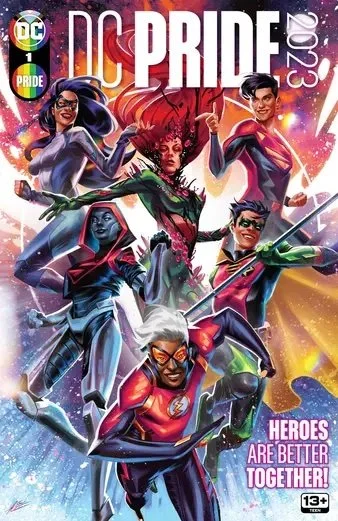Icon vs. Hardware #3 // Review
Icon just killed Vandal Savage. Naturally, Savage is a little upset about that. It’s the worst time to get a call from anyone, but Hardware needs to let him know that he broke everything. He’s in Dakota City. A biplane is flying over a T-Rex while military personnel advance. Time is collapsing. Things have become a bit of a mess in Icon vs. Hardware #3. Writers Reginald Hudlin and Leon Chills reach the halfway point of their 5-issue mini-series. The issue features a large art team, including pencillers Denys Cowan, Darryl Banks, and Yasmín Flores Montañez and inkers John Floyd and Darryl Banks. Christopher Sotomayor lends depth to the page with well-integrated color.
A quick blast should have killed Savage. It’s doubled him. It doesn’t take much for Icon to realize that Savage is from another universe altogether. Savage is a relatively minor concern for Hardware, though. He’s been trying to engineer a better world by changing things in the past. It’s a perfectly noble pursuit, but it’s only going to make things more complicated for everyone involved. He doesn’t mean to play god. It just sort of turned out that way. And now things are unraveling. Meanwhile in the Universe of Earth-0, a dark intelligence has taken notice of the two heroes.
Hardware’s attempt to improve things goes spectacularly wrong. One might think that someone with the kind of profound analytical mind as a guy like Curt Metcalf would have realized the insane level of complexity there is in history and come to understand that it’s not going to be changed so easily to conform to somebody’s idea of utopia. Hudlin and Chills keep the story centered solidly enough on the characters of Icon and Hardware to keep any issues with the overall plot from entering into the center of the panel. The title characters truly are at the center of everything. This keeps the story from leaning too heavily on weak sci-fi time travel tropes.
The issue cycles through three artists. The styles of the artists are similar enough to feel cohesive while being different enough to be distinct. There are natural breaks in the plot that allow for a smooth transition between artists. The action has impact even when it is stiff. Drama occasionally hits with an impressive punch. There’s a bright and vivid feel to Sotomayor’s colors that does an excellent job of tying the visuals together for the entire run of the issue.
On one level, it kind of seems like Hudlin and Chills are trying to put too many different parallel plots into a single series. It almost feels like the series could have worked better as three different one-shots with three different main characters, and it would have felt a bit less crammed together. There’s more than enough going on between the three central plots to keep it all captivating from cover to cover, but it doesn't seem like the parallel plots in the series fit together all that well.









